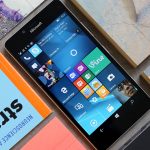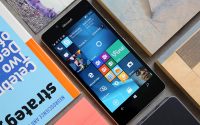Microsoft Hits Pause On Its Mobile Device Strategy
Last week’s Microsoft’s announcements, which were expected to include new hardware, fulfilled their promise in quality if not quantity. The Surface Studio desktop PC, years in the making, sets a new bar with its combination of design and engineering aimed at professionals. But it, along with a beefed-up version of the Surface Book and a promise of new VR headsets from Microsoft partners, were part of an event that focused far more on Windows per se than new devices.
At the event, Microsoft touched on cloud services by announcing a new 3D object-sharing community and interactive streaming features based on the company’s acquisition of a startup named Beam. But there was little mobile news that fit into what CEO Satya Nadella describes as the company’s “cloud first, mobile first” strategy. No new Surface tablets shared the stage with the powerful Surface Studio and Surface Book refresh. And Microsoft has yet to release the rumored Surface Phone that would indicate a break with the flagging Lumia smartphone brand that it acquired from Nokia.
In fact, the most prominent appearance by a smartphone was in the context of a new app that will allow the 3D scanning of objects. But if recent Microsoft history holds, that functionality will make its way to iPhones and Android phones. Following the path of the clever Microsoft Garage apps, they might even debut on those platforms.
Coming on the heels of Google’s far-flung hardware launches at the start of October—including the Pixel smartphone, AI-infused Google Home speaker, and DayDream View VR headset—it almost seemed as if Microsoft has turned away from portable devices. Especially since the company also recently abandoned its Microsoft Band wearable.
But since the debut of the original Surface devices, Microsoft has always carefully metered the quantity of mobile devices it’s rolled out. Despite strong revenue growth for the Surface lineup, it’s still early days for the company’s own hardware products. And if Microsoft had nothing mobile ready to go for this holiday season, it shrouded that well with a loosely defined theme of technology’s pendulum swinging back from consumption to the type of creation that its Surface Studio and 3D tools are designed to facilitate.
However, the company’s most mobile Windows devices will sit out the 2016 holiday without a refresh. While the Surface Pro—which has accounted for the lion’s share of growth of that division—will certainly see an update in the next year, more questions loom around Microsoft’s struggling smartphone efforts.
Despite the smartphone market’s saturation, just the past month has seen Chinese vendors tantalize consumers with aggressively-priced high-end handsets from U.S. newcomer LeEco and nearly bezel-free designs from Xiaomi. For Microsoft, leaving the Lumia era behind and letting the Surface hardware team bring its ambitious, creative approach to a smartphone is an opportunity to hit “reset” on the company’s mobile efforts. But unless Microsoft can get more developers to build Windows apps designed with phones in mind, it may have to make a more extended retreat from the category.
Fast Company , Read Full Story
(22)






